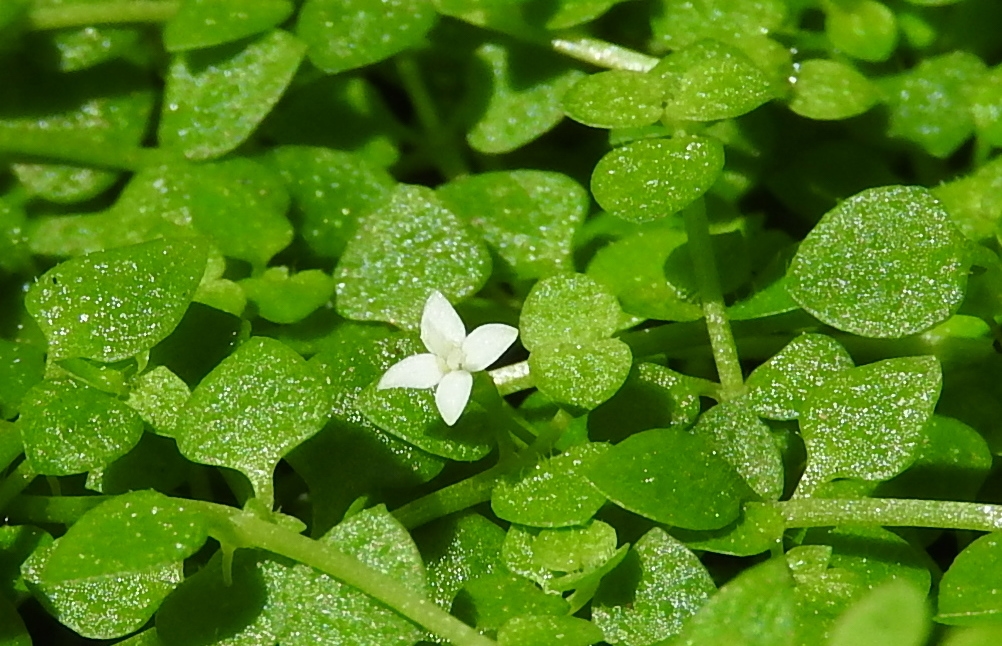Habit: Oldenlandiopsis callitrichoides grows as a stoloniferous, glabrous, perennial up to 50 cm in height and outwards to 15 cm and rooting at the nodes. The leaves are arranged oppositely and are ovate to oval to slightly deltoid, up to 7 mm long, with an obtuse/acute leaf apex and an entire leaf margin.
The complete, perfect, actinomorphic flowers are solitary in leaf axils. The calyx has 4 – 5 fused, slightly pubescent, sepals. The corolla has 4 fused white petals that form a short tube with a pubescent throat. There are 4 stamens that are fused to the corolla. The ovary is inferior with 2 locules with many ovules. There are flowers with long styles and short styles (heterostylous). The fruit is a capsule at maturity.
Habitat: Oldenlandiopsis callitrichoides grows in wet soil or on rock. Can be a pest in shade and green houses.
Distribution: Oldenlandiopsis callitrichoides occurs in the central island groupings in the Lucayan Archipelago, the Caribbean, Central America and parts of South America. It has spread to Florida and Central Africa.
Medicinal/Cultural/Economic usage: Oldenlandiopsis callitrichoides is not known to be used medicinally in the Lucayan Archipelago.

